March 28 -
April 2, 2019
March 28. We left Geneva around 7:30 and
travelled 6 hours by train to Florence and then another 2 hours by taxi
to reach the beautiful Tuscan town of Siena. We met Anna and
Franco, the owners of the apartment we are renting for 5 nights.
The apartment was previously a convent! Poor Franco lugged our
overweight bags up to our 3rd floor apartment.
March 29. We left our
apartment around 10 a.m. and proceeded to the city
center, Piazza del Campo (Campo Square). Campo Square is one of
Europe's
greatest medieval squares and the historic center has
been declared a UNESCO site. We walked the cobblestone
streets and admired and all of the
fabulous cafes and restaurants.
We ate a breakfast of cheese omelette and sweet cookies and muffins which they called
biscuits. At The Square observed Tower and clock church. fair amount of
tourists already here but not bad at all. Noticed quite a few Yankees.
We climbed a steep hill to the Siena duomo. Beautiful striped Tower and front
of church. Carol bought some trinkets for Christmas. Had a slice of
pepperoni pizza that was disappointing as the pepperoni was really
Bologna. yuck! You heard me. Bologna. I do not eat Bologna :-)
We highly recommend a company called "Tours By Locals".
We have used them in Europe and in New York. They are private Tours and
we like them better than the larger tours sense they work out better for
us. Our tour guide was Simonida Miletec. She is also a music teacher and
an accomplished soprano.
Here is a link to one of her performances from YouTube.
https://youtu.be/DEBSO1Clajg
She took us on the street by Street tour of Siena. She focussed mainly
on the piazza del Campo which is the city center. Then we went to the
Duomo which is a very well-known Basilica. We lit a candle for Karen.
March 30. Walked back to Plaza Campo and had breakfast at Paleo where
Lou had mozzarella tomato and Carol had ham and cheese croissant while
we both had cappuccino. From there we walked outside the wall and down
the hill and then realized we went too far. Walked back and found
overlook area. Took lots of pictures and enjoyed the wonderful weather.
Stopped at a cafe for a pasta lunch.
Sienna Tuscany, Italy





 |
The historic centre of Siena has been declared by UNESCO a
World Heritage Site. It is one of the nation's most visited
tourist attractions, with over 163,000 international arrivals in
2008. Siena is famous for its cuisine, art, museums, medieval
cityscape and the Palio, a horse race held twice a year.
Capitoline Wolf at Siena Duomo. According to a legend Siena was
founded by Senius and Aschius, two sons of Remus. When they fled
Rome, they took the statue of the She-wolf to Siena, which
became a symbol of the town.
Siena, like other Tuscan hill towns, was first settled in the
time of the Etruscans (c. 900–400 BC) when it was inhabited by a
tribe called the Saina. The Etruscans were a tribe of advanced
people who changed the face of central Italy through their use
of irrigation to reclaim previously unfarmable land, and their
custom of building their settlements in well-defended hill
forts. A Roman town called Saena Julia was founded at the site
in the time of the Emperor Augustus. Some archaeologists assert
that Siena was controlled for a period by a Gaulish tribe called
the Senones.
According to local legend, Siena was founded by Senius and
Aschius, two sons of Remus and thus nephews of Romulus, after
whom Rome was named. Supposedly after their father's murder by
Romulus, they fled Rome, taking with them the statue of the
she-wolf suckling the infants (Capitoline Wolf), thus
appropriating that symbol for the town. Additionally they rode
white and black horses, giving rise to the Balzana, or coat of
arms of Siena with a white band atop a dark band. Some claim the
name Siena derives from Senius. Other etymologies derive the
name from the Etruscan family name Saina, the Roman family name
Saenii, or the Latin word senex "old" or its derived form seneo
"to be old".
Siena did not prosper under Roman rule. It was not sited near
any major roads and lacked opportunities for trade. Its insular
status meant that Christianity did not penetrate until the 4th
century AD, and it was not until the Lombards invaded Siena and
the surrounding territory that it knew prosperity. After the
Lombard occupation, the old Roman roads of Via Aurelia and the
Via Cassia passed through areas exposed to Byzantine raids, so
the Lombards rerouted much of their trade between the Lombards'
northern possessions and Rome along a more secure road through
Siena. Siena prospered as a trading post, and the constant
streams of pilgrims passing to and from Rome provided a valuable
source of income in the centuries to come.
The oldest aristocratic families in Siena date their line to the
Lombards' surrender in 774 to Charlemagne. At this point, the
city was inundated with a swarm of Frankish overseers who
married into the existing Sienese nobility and left a legacy
that can be seen in the abbeys they founded throughout Sienese
territory. Feudal power waned, however, and by the death of
Countess Matilda in 1115 the border territory of the March of
Tuscany which had been under the control of her family, the
Canossa, broke up into several autonomous regions. This
ultimately resulted in the creation of the Republic of Siena.
The Republic existed for over four hundred years, from the 12th
century until the year 1555. During the golden age of Siena
before the Black Death in 1348, the city was home to 50,000
people.
In the Italian War of 1551–59, the republic was defeated by the
rival Duchy of Florence in alliance with the Spanish crown.
After 18 months of resistance, Siena surrendered to Spain on 17
April 1555, marking the end of the republic. |
|
|
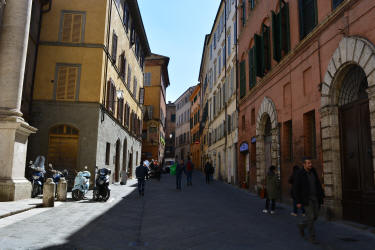
|
|
The street in front of our apartment
|
|
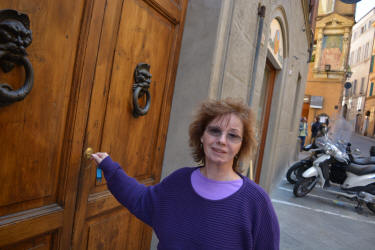
|
|
Carol at the door of our apartment in Siena
|
|
|
|
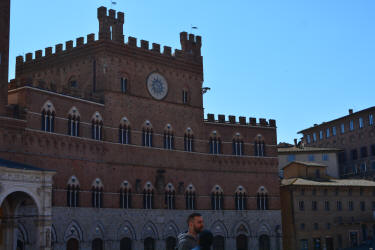
|
|
Piazza del Campo
|
|

|
|
Carol at the Piazza del Campo
|
|
|
|
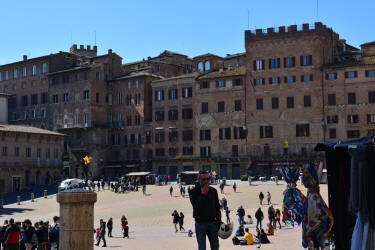
|
|
Piazza del Campo
|
|
|
|
|
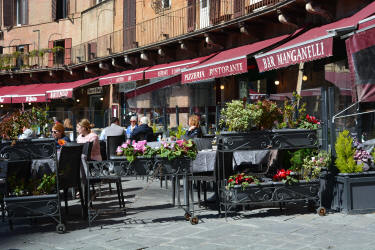
|
|
A cafe at Piazza del Campo. Yummy food.
|
|
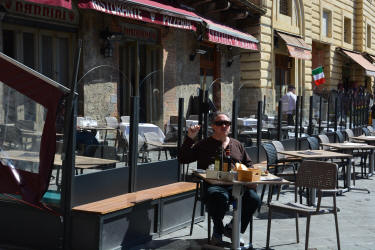
|
|
Lou having breakfast at the Piazza del Campo
|
|
|
|
|
|
|
|
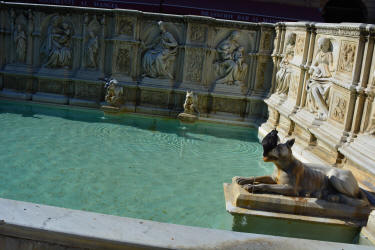
|
|
The fountain at the Piazza del Campo
|
|
|
|
|
|
|
|
|
|
|
|
|
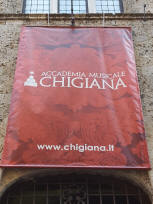
|
|
The music hall
|
|
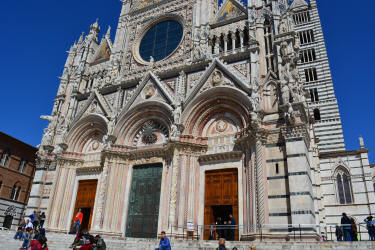
|
|
The Duomo facade
|
|
|
|
|
|
|
|
|
|
|
|
|
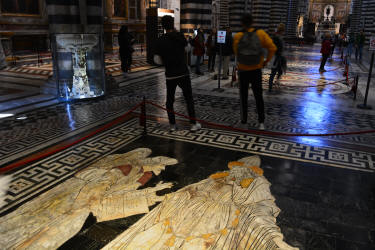
|
|
The next several pictures are of the interior of the Duomo
|
|
|
|
|
|
|
|
|
|
|
|
|
|
|
|
|
|
|
|
|
|
|
|
|
|
|
|
|
|
|
|
|
|
|
|
|
|
|
|
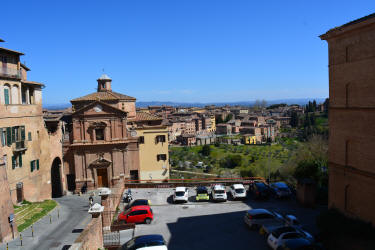
|
|
The views were amazing
|
|
|
|
|
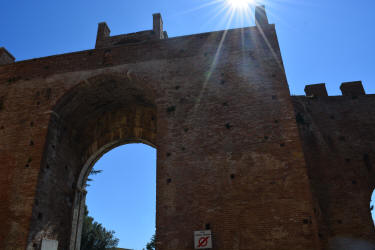
|
|
The city walls of Siena
|
|
|
|
|
|
|
|
|
|
|
|
|
|
|
|
|
|
|
Europe 2019
|